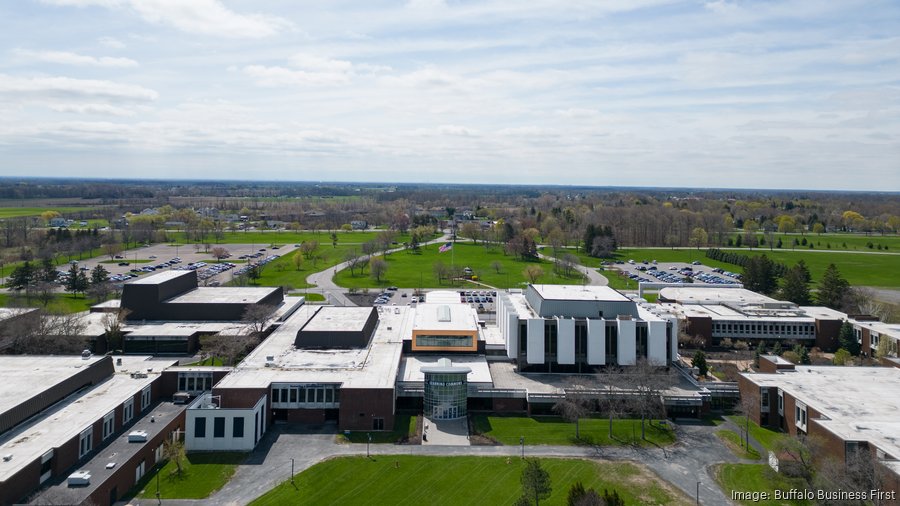In the dynamic world of academia, the search for new college presidents is a constant endeavor. Prestigious universities like Harvard, University of Pennsylvania, Yale, and Stanford are currently on the lookout for their next leaders. However, the role of a college president has evolved significantly over the years, becoming a multifaceted position that combines fundraising, public relations, and city governance. Let’s delve into the changing landscape of college presidents and the challenges they face in today’s society. The Changing Landscape of College Presidents: A Search for Leadership.

1. The Role of a College President: A Modern-Day Renaissance
Being a college president is no longer a straightforward administrative position. Today, it encompasses a range of responsibilities that require a diverse skill set. Bill Funk, the founder of higher-education executive search firm R. William Funk & Associates, aptly describes the role as a fusion of a professional fundraiser, a public relations executive, and the mayor of a city. College presidents are now expected to lead their institutions with vision, navigate complex financial landscapes, engage with stakeholders, and foster innovation. The evolving nature of the role necessitates finding leaders who can adapt and thrive in this dynamic environment.
2. The Search for Leadership: A Challenging Endeavor
The quest for a new college president is a complex process that demands careful consideration and meticulous evaluation. Universities enlist the help of executive search firms to identify candidates who possess the requisite qualities and experience. These firms undertake extensive research, leveraging their networks and expertise to ensure a thorough search. The primary goal is to find leaders who can steer the institution towards success while upholding its values and academic excellence. The search involves reviewing resumes, conducting interviews, and assessing candidates’ ability to tackle the unique challenges of a modern-day college presidency.
3. The Evolving Demands of Higher Education Leadership
The changing landscape of higher education has amplified the demands placed on college presidents. As institutions face financial pressures, shifting student demographics, and technological advancements, leaders must navigate uncharted territory. Fundraising has become a critical aspect of the role, as college presidents are expected to secure resources to support academic programs, research initiatives, and infrastructure development. Public relations skills are equally vital, as leaders must effectively communicate their institution’s achievements, values, and contributions to various stakeholders. Additionally, college presidents are now tasked with fostering diversity, equity, and inclusion on campus, ensuring that their institutions remain progressive and inclusive.

4. The Power of Partnerships: Collaborations for Success
In an interconnected world, college presidents must forge strategic partnerships to drive innovation and enhance the institution’s stature. Collaborating with industry leaders, government entities, and other educational institutions can yield mutually beneficial outcomes. Through these partnerships, college presidents can create research opportunities for faculty, establish internship programs for students, and cultivate a vibrant ecosystem of innovation. By leveraging external networks, college presidents can position their institutions as hubs of knowledge, fostering interdisciplinary collaboration and pushing the boundaries of research.
5. Nurturing a Culture of Innovation: Embracing Change
In today’s rapidly evolving world, college presidents must foster a culture of innovation within their institutions. Embracing change is essential to adapt to emerging trends and stay ahead of the curve. By encouraging creativity, interdisciplinary collaboration, and entrepreneurial thinking, college presidents can empower faculty and students to explore new frontiers. Creating spaces for experimentation, promoting interdisciplinary research, and investing in cutting-edge technologies are key strategies to ensure that institutions remain agile and responsive to the evolving needs of students and society.
6. The Importance of Ethical Leadership: Guiding with Integrity
Ethical leadership is paramount in the role of a college president. As the face of the institution, leaders must uphold the highest standards of integrity and ethical conduct. Transparency, accountability, and fairness are essential pillars of ethical leadership. College presidents must make informed decisions that prioritize the well-being of students, faculty, and staff, while also considering the long-term sustainability and reputation of the institution. By setting a strong ethical example, leaders can inspire trust, foster a positive institutional culture, and attract diverse talent.
7. The Need for Adaptability: Navigating Uncertain Times
College presidents must possess adaptability and resilience to navigate uncertain times. The COVID-19 pandemic has highlighted the importance of proactive leadership in times of crisis. Leaders must be prepared to make swift decisions, pivot to online learning models, and prioritize the health and safety of their campus communities. The ability to navigate adversity, embrace innovation, and lead with empathy is crucial for college presidents in an ever-changing landscape.
8. The Role of Mentorship: Cultivating Future Leaders
As college presidents transition into new roles, they have an opportunity to cultivate future leaders through mentorship programs. By sharing their knowledge, experiences, and insights, retired presidents can guide emerging leaders and shape the future of higher education. Mentorship programs foster a culture of continuous learning, support the development of leadership skills, and ensure a seamless transition of institutional knowledge. By investing in the next generation of college presidents, universities can ensure a sustainable pipeline of leadership talent.
9. Embracing Diversity and Inclusion: A Catalyst for Excellence
Diversity and inclusion have emerged as pivotal factors in the success of higher education institutions. College presidents must prioritize creating an inclusive environment that celebrates diversity and empowers underrepresented groups. By fostering a culture of belonging, institutions can attract talent from diverse backgrounds, perspectives, and experiences. This diversity enriches the learning environment, drives innovation, and prepares students to thrive in a globalized world. College presidents must champion diversity and inclusion as core values, embedding them into the fabric of their institutions.
10. The Future of College Leadership: An Ever-Evolving Landscape
As the landscape of higher education continues to evolve, so will the role of college presidents. The challenges and opportunities that lie ahead require leaders who are forward-thinking, adaptable, and committed to the mission of education. The search for new college presidents will remain a critical endeavor, ensuring that institutions are equipped with visionary leaders who can navigate complexities, drive innovation, and shape the future of higher education.

Conclusion
The search for new college presidents is a testament to the ever-changing landscape of higher education. As universities strive for excellence, they require leaders who can adapt to evolving demands, forge strategic partnerships, foster innovation, and champion diversity and inclusion. The role of a college president has transformed into a multifaceted position that demands a unique blend of skills and attributes. By selecting visionary leaders, universities can position themselves as beacons of knowledge, driving societal progress and shaping the future of education.
